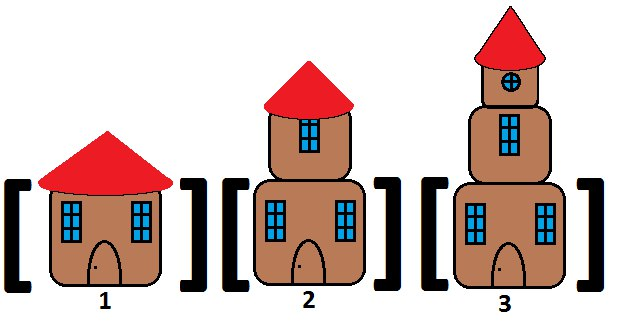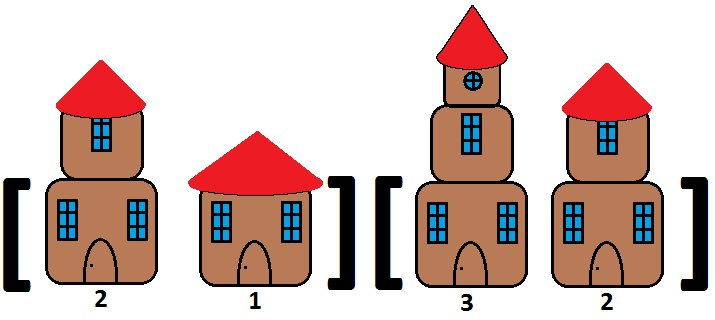题意:给定n个元素的序列a[],其升序序列为b[]。现在要求将序列a[]分成最多个连续的块,要求对每个块排序后的序列c[]与b[]相同。
思路:考虑最后结果得到的所有块,我们取出每个块的末尾元素构成一个升序序列d[top]。
注意到 (0 <= i < top) d[i] = b[i]。
我们求出a1 ... a[i]的最大值Max,ai ... a[n]的最小值Min。最后比较有多少个Min[i+1] >= Max[i]就可以了。
AC代码:
#include <cstdio>
#include <cstring>
#include <cmath>
#include <cstdlib>
#include <algorithm>
#include <queue>
#include <stack>
#include <map>
#include <vector>
#define INF 0x3f3f3f3f
#define eps 1e-4
#define MAXN (100000+10)
#define MAXM (1000000+100)
#define Ri(a) scanf("%d", &a)
#define Rl(a) scanf("%lld", &a)
#define Rf(a) scanf("%lf", &a)
#define Rs(a) scanf("%s", a)
#define Pi(a) printf("%d\n", (a))
#define Pf(a) printf("%lf\n", (a))
#define Pl(a) printf("%lld\n", (a))
#define Ps(a) printf("%s\n", (a))
#define W(a) while(a--)
#define CLR(a, b) memset(a, (b), sizeof(a))
#define MOD 100000007
#define LL long long
#define lson o<<1, l, mid
#define rson o<<1|1, mid+1, r
#define ll o<<1
#define rr o<<1|1
using namespace std;
int Max[MAXN], a[MAXN];
int main()
{
int n; Ri(n);
Max[0] = 0;
for(int i = 0; i < n; i++)
{
Ri(a[i]);
Max[i+1] = max(Max[i], a[i]);
}
int r = INF, ans = 0;
for(int i = n-1; i >= 0; i--)
{
r = min(r, a[i]);
if(r >= Max[i])
ans++;
}
Pi(ans);
return 0;
}










 一场海滩上的建造比赛激发了编程挑战,任务是通过重新排列不同高度的沙堡来创建最多数量的连续有序段,同时保持整体序列的递增顺序。
一场海滩上的建造比赛激发了编程挑战,任务是通过重新排列不同高度的沙堡来创建最多数量的连续有序段,同时保持整体序列的递增顺序。


















 552
552

 被折叠的 条评论
为什么被折叠?
被折叠的 条评论
为什么被折叠?








